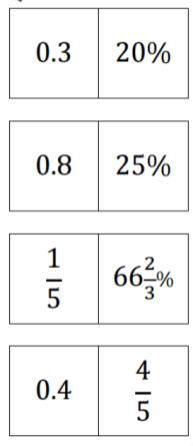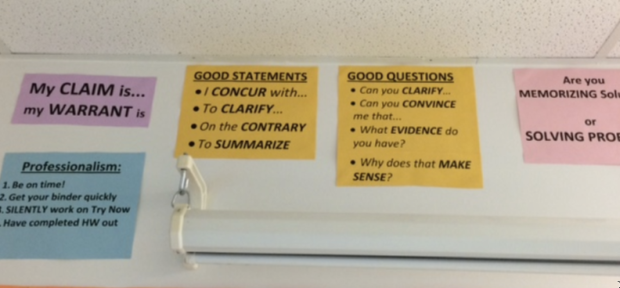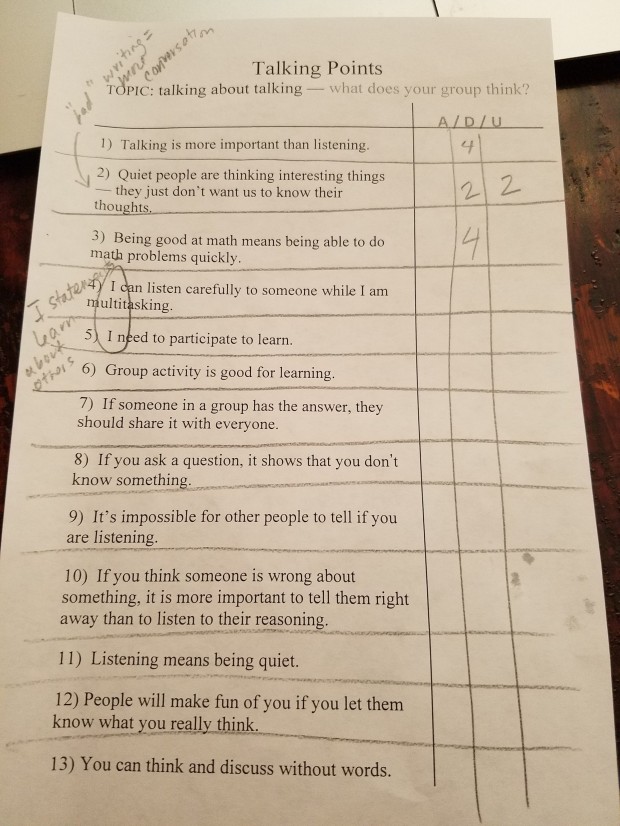Every so often, I like to take reflect on where I think we are as a community of math educators who collaborate online. Usually after attending TMC — a math conference run for and by math educators. But please forgive me in advance. This is the ramblings of someone writing late into the night and someone who isn’t revising. Musings, at best.
Taking Stock Previously
May 2009: Why Twitter?
November 2009: How BlogBuddies Became Friends
July 2012: 40 Choose 2 First Dates, or Initial Impressions of TMC12
March 2013: Some New Things On the Interwebs & HOLY COW What is Happening!
June 2013: My Thoughts on the #MTBoS
August 2013: TMC13: The State of Things For Me
July 2014: Teacher Growth, the MTBoS, and TMC14
July 2015: My Thoughts about the Evolution of the #MTBoS: 2015 Edition
But I haven’t taken stock for a while. Partly it was because I didn’t see much change in 2016 from what I wrote in 2015. And then I made a decision to consciously avoid jumping in the numerous conversations that happened during and after TMC17, although I had lots of thoughts. [1] So now it’s time to take stock again.
Taking Stock and Making Predictions: Teacher Leader Edition
The biggest thing by far that I’m noticing is that people in the community are becoming (and seeing themselves) as teacher leaders.
CULTIVATION OF TEACHER LEADERS WITHIN THE MTBOS
When I started teaching a bit over a decade ago, I didn’t see many pathways for classroom teachers to have huge impacts on math education. (That wasn’t something I was looking for, to be clear, it just wasn’t something that I saw in my world.) In the past five years, as social media has fueled things, our classrooms aren’t silos anymore and our practice have become more public, and as this community has grown bigger, I’ve seen the rise of various pathways that teachers can become teacher leaders.
There are many ways people can become leaders from within the MTBoS community (for example, Annie Perkins/Megan Schmidt/Dan Anderson/Justin Aion inspire playful mathematics through art for so many math teachers. And people are planning and running mini-TMCs and tweet ups. New things like Desmos’ Computational Layer come around and people like Jay Chow become the expert teacher of us teachers who want to learn it. There are always people running and presenting at the Global Math Department.) That has actually been something I’ve found true since the early days of the MTBoS. It’s just that there are more and more of them now as the community has grown. I’ve found that the MTBoS provides numerous ways for people to gain their voice as a teacher leader. Tweeting is one way, short and sweet. Blogging is another. And TMC also gives some opportunities for honing a face-to-face voice (from the short and sweet my favorites, to the 30 or 60 minute sessions, to the six hour morning sessions). In a small community which attempts to be supportive and people try to raise each other up, it is easier to identify and amplify your voice, see that others find what you have to offer valuable, and gain confidence in yourself.
CULTIVATION OF TEACHER LEADERS OUTSIDE OF THE MTBOS
But we now have community members that have become recognized as teacher leaders outside of our MTBoS community. For a long time, there was Dan Meyer who fit this definition. But now there are a group of people who are in that category — MTBoS people who have kinda broken out of the MTBoS in terms of their impact on math education. Fawn Nguyen is always traveling to give talks! Julie Reulbach publishes a post and almost 10K people get it in their inboxes! John Stevens and Matt Vaudry published a book around their approach to the classroom that resonates with people! Heck, so many books are out now or coming out now by MTBoS people *cough* Christopher Danielson! Chris Shore! Edmund Harriss! Denis Sheeran! Wait, so many white men! In any case, I’ve compiled a list of all MTBoS books that I know about here.) [2] In fact, there are now a small group of MTBoS people who seem to be making the conference circuit giving keynotes. There are so many people who are now presenting or even keynoting regularly at NCTM and other conferences. And there are a lot of MTBoS folk who are on NCTM committees. (I don’t know if I’m in the minority or majority, but I see NCTM as acting as a pretty great partner to this online math teacher community.) And probably most exciting to me, I’m reading more and more tweets of people in the community taking on math coaching roles for districts, or becoming department chairs! Teachers who love math teaching leading math teachers! The MTBoS cultivates internal leaders who then can become leaders more broadly. A lot of that has happened in the past three years.
MY WORKING DEFINITION OF A TEACHER LEADER
I have done a lot of thinking about the rise of the teacher leader, and what even a teacher leader is. These thoughts started in 2015, and became more solidified as I started talking with Julie Reulbach in 2018 about her TMC keynote address which is specifically about teacher leadership. (YOU SHOULD WATCH IT!) I came to the conclusion that I personally would define a teacher leader broadly… as someone whose work has a positive impact on kids outside of their own classroom.
So that includes sharing materials/lessons with other teachers, supporting other teachers when they’re down, writing a book that changes someone’s practice, running (non-sucky) PD which pushes participants forward in their thinking about teaching, creating spaces and structures for teachers to reflect about their practice (ahem, shameless plug for The Virtual Conference of Mathematical Flavors that I’m hosting right now!), tweeting out answers to questions people ask, writing blogpost reflections about your classroom that inspire others, whatever. As Julie said in her talk, teacher leadership is not a ladder you climb. (I think it used to be.) You don’t have to leave the classroom to have that broader impact. And that a tweet that hits someone at the right time might be way more impactful and useful than a book. [3] This isn’t something “new” but it is something that I think people in the MTBoS are starting to be aware of.
With the smaller things we’re doing (cheerleading each other, having book chats online, pushing people to think about diversity and equity in their classrooms, etc.), we used to think of it as just helping each other out. But there’s a reframing that is happening. We’re doing the same things we’ve always been doing, but people are starting to recognize that this work is the work of a teacher leader. That, “OMG, I am actually a teacher leader… wait, no way… I am not… but… maybe I kinda am a little bit?” It might slowly be entering some MTBoS folk’s understanding of who they are. And that’s pretty awesome. There may be nothing different in what people are doing, but I sense the beginnings of a shift in how people are interpreting what they are doing. (And acknowledging and really accepting that what they are doing has real value to people.)
MY PREDICTION ON TEACHER LEADERS
It’s like — I don’t know — I see the pathways for teachers to become leaders as numerous, crisscrossing, and some pathways are only just beginning to show themselves. Maybe vines on a trellis is the image that I’m trying to go for? All I know is that there are now a zillion different ways for someone to have a positive impact on kids outside of their own classroom… and the existence of the internet and the online math teacher community is making that even easier. I predict that there will be some cool ways people figure out how to have an impact outside of their classrooms that we can’t even image. Who knows? Find ways to get involved with new (math) teacher training programs — or create resources to help new math teachers? Argh. I literally can’t come up with good ideas… but that’s precisely the point. Who could have predicted 5 years ago that there would be a math space in the Minnesota State Fair?! I suspect in 5 years there will be a number of different awesome pathways that people will carve out for themselves to become a teacher leader in a way that aligns with their passion/interests that I totally wouldn’t have anticipated today. Which means we’re at a cusp. We’re still trying to figure out what precisely teacher leadership can look like. We have a number of examples that have emerged. But we’re likely going to see a bunch more.
LANI AND TRACY AND BIGGER PICTURE THINKING
We have people who are in math ed and also part and parcel of our MTBoS community. Specifically, I’m thinking of Lani Horn and Tracy Zager. Their books Motivated and Becoming the Math Teacher You Wish You’d Had tout the work of people in the MTBoS do and outline pedagogy that most everyone in the community can rally behind. But also their work also engages deeply with the idea of identity and status. And importantly, although in the past I saw certain beams of light here and there emerge about the idea of identity and status in the classroom (in the vein of complex instruction), this kind of thinking is becoming much more normal in the conversations that are being had in the MTBoS. More and more, I think people (myself totally included) that the basis of an awesome classroom has to be rooted in consideration of these things. Thinking about “how to teach completing the square,” for example, isn’t just about scaffolding and conceptual development of the idea. Being able to do that well is also predicated on building an atmosphere in the classroom that the scaffolding and conceptual development can happen within. I think more and more people (myself included) are starting to recognize this. Like Lani and Tracy do, I predict more people in math education are going to start engaging with our community, as they will come to see us as a powerful resource, and we will engage with them if we see them as an ally in our classroom work.
In general, the MTBoS conversations aren’t entirely consumed with content or sharing resources anymore. It hasn’t been that for a while. Broader discussions about identity, status, diversity, equity, social justice are now more commonplace. Not everyone is engaging in these conversations, but they’re happening and I bet this is going to turn into another pathway that the MTBoS will be creating teacher leaders that are recognized outside of the community. And I’ve seen that these conversations of identity, status, diversity, equity, social justice have been turned back onto us. Not just things to consider for our classroom community, but also for us to consider as an online math teacher community. Right now there is a small but growing recognition that we can’t brush these conversations under the rug — for the sake of our students, and for the sake of our own community.
DESMOS AND ILLUSTRATIVE MATHEMATICS
I don’t quite know what to make of this… but there are a ton of #MTBoS classroom teachers that have left the classroom to work full time at Desmos or Illustrative Mathematics. I went to dinner with a group of IM people in Cleveland recently and there were only two people at the giant table who I wasn’t friends with from the #MTBoS. Similarly, I know a lot of the people working at Desmos (and I heart them all!). Although I don’t know what to make of this, what I can say is that these people are working at places I believe in, and that will have a large-scale positive impact on math education. And I probably can say that if it wasn’t for the MTBoS, many of them might not have this opportunity that they decided to take.
***
This post feels incomplete. I feel like I have so much more to think about and write. When rereading this post before I #pushsend, the ideas seem inchoate, and somewhat incoherent, to me. I can’t underline anything and say “THIS. THIS IS WHAT I’M TRYING TO GET AT.” Usually when I sit down to write something like this, all the blathering helps me refine my thinking and gets me to clarify what I really think. And at some point, I usually hit upon that thing that makes me feel excited and like I have found something TRUE and A REAL INSIGHT. But I am not leaving this post feeling any more lucid. No big insights emerged. So I suppose I leave this post as late night musings, as I started it as.
[1] If you don’t know what this is all about, but me being all cryptic has piqued your interest, you can get a flavor of it by reading these two posts: here and here. This moment was important for me in one huge way. It highlighted how scaling up the online math teaching community without a central authority could lead to problems with intentionality/messaging/impact. How does a decentralized community with community-builders who are volunteers grow bigger with a coherent set of values and vision and positivity that are not only agreed upon but also enacted? Where intentionality in things that happen have a place? I don’t have answers.
[2] In 2015, I noticed there were “brands” (for lack of a better word). I still see that. The number of people with a narrow/specific idea/vision and a coherent voice that really resonates with people is growing. These people are gaining a lot of cache outside of the MTBoS. Often times, these “brands” are related to projects that were just gaining traction in 2015 (like Visual Patterns or Open Middle or Which One Doesn’t Belong or Clothesline Math or …). Conferences, books, at the MTBoS spread the word of these “brands.” And now from their rising popularity in 2015, they’ve become something bigger in math education. And with that, they carved out one pathway of “teacher leadership” that didn’t really exist before. But a number of people seem to be following it in some form. And that’s cool to see.
[3] But what I like about the MTBoS is that, taking my definition of teacher leader, it’s all a community of teachers who are trying to support each other. And so in the ways we all prop each other up, push each others’ thinking, share resources, etc., we all are having a positive impact on each others’ classrooms and each others’ kids. And so we all in small ways can consider ourselves teacher leaders. I love that it’s not a zero-sum game.
A PERSONAL LATE NIGHT MUSING: TEACHER LEADER VERSUS MASTER TEACHER
I wrote this and it doesn’t quite fit above, but I didn’t want to delete it. So I’m sticking it at the bottom of this post here. When I started teaching, I wanted to become a “master teacher.” That was my goal. Feel like I know I’m an expert in what I’m doing. I have since realized I will never consider myself a master teacher. That’s probably due to my own psychological makeup. But in the #MTBoS we have this idea that “everyone has valuable things to share.” And I truly believe that. But I also wonder if — now that I’m seeing so many ways people teach — I don’t believe in the idea of a master teacher anymore? As opposed to my first few years of teaching, I now don’t really think about it at all. Because over the years in the MTBoS I’ve see so many different ways people reach their kids, I recently realized that I don’t have a single ideal/standard to live up to. There are so many ways to be an awesome teacher. (Hence, my virtual conference of mathematical flavors was born. I wanted to showcase this diversity!) I just have to figure out who I am as a teacher as best as I can and just keep on trucking.






























